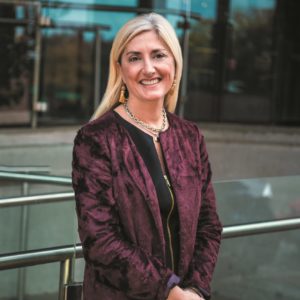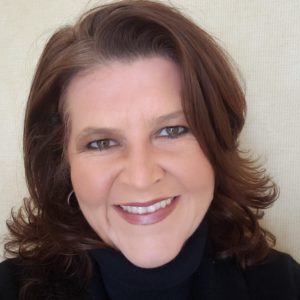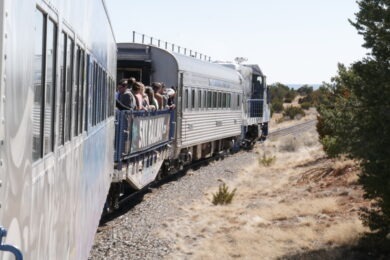APEX COVID-19 Business Recovery Taskforce leaders share insights on planning meetings during a pandemic
Drowning in a sea of protocols and guidance documents released daily by government agencies, venues and organizations? Looking for clarity about how to distill all those phased requirements into a realistic agenda that will protect everyone while still achieving essential business goals?
Events Industry Council (EIC)’s Accepted Practices Exchange (APEX) COVID-19 Business Recovery Taskforce is navigating the turbulence by collecting accepted practices in one place. Under this umbrella, working groups are aggregating, curating methods to contextualize the waves of guidelines and explain the implementation process. The task force is not writing standards; it is just making viable solutions easier to find.
The group is addressing health and safety, community, global ecosystems, reskilling the industry, innovation, digital transformation, advocacy and risk mitigation, with expert groups addressing each area, starting with a report on health and safety from the meeting and event design group. The living document will be updated as the situation changes and everyone learns more about how to support a vibrant live-events industry.
After almost two months of work, EIC CEO Amy Calvert, APEX co-chair (and ALHI president and CEO) Mike Dominguez joined APEX co-chair and Salesforce Strategic Event Senior Director Kristin Horstman for a download of lessons being learned as part of a special #HospitalityStrong webinar with the Smart Meetings community. The conversation turned into a vigorous question-and-answer session, covering everything from food and beverage to contracts and roles and responsibilities. For highlights, read on.
Advocating for the Future

AC: One of the goals of the task force is advocacy, including acting as the unifying voice calling for relief for the industry that is essential for the economy. Underpinning of all that advocacy effort is data. Along with Meetings Mean Business, Exhibitions Mean Business and Go LIVE Together Coalition, EIC is using impact studies to tell the story of the power of the events industry to employ people, including minorities.
A coalition of advocacy partners is connecting with corporations to collaborate and learn from adjacent industries about recovery and the adaptations needed for the future. Destinations International’s We’re Here to Help recovery campaign was designed to unify the meetings, events and travel industry. Members and partners are presenting a unified voice to communicate loudly: “We are the events industry, and we will drive economic recovery—but we need help now.”
Two draft letters—one focused globally, another on the United States—can be customized and used for outreach to key policy makers.

KH: We have to develop the trust again to stand next to a person and go back on an airplane. A “know before you go” communication outreach can help. And we need to address equity and elevate our voice. Our industry’s employees are among the hardest hit in the unemployment figures.
We need to tell people outside the industry how important we are. We’re good at taking care of our attendees and our customers, but we have to take care of our own. We need to talk about business as a platform for change.
We are all itching to get back to face-to-face, but we’re going to have to figure out what that means. These working groups will address each of the obstacles to getting back to meeting, collect solutions and advocate for change at the local, federal, state and global level.
Preparing for a Return to Meeting

MD: We’re at a crossroads because everything is changing quickly, and the reality is different in different areas of the country and different types of hotels. Many are just bringing their teams back now to ramp up new operational practices.
Planning has to address the entire ecosystem of the travel experience. That includes the airplane and how you get from the airport to the hotel. At the property level, we are trying to figure out how things will have to look different. That includes transmission barriers, cleaning, room amenities and the coffee break.
Hotels have always done a good job of cleaning. We’re cleaning for something different today, so we are adjusting the solutions used to combat the COVID-19 pathogen, and we are using electrostatic sterilization and ionization.
Everything from the remote control to the toiletries are sterilized and packaged, then the room is sealed until the guest opens with keyless entry. Housekeeping will only reenter during the stay on request at most properties. All the paper in the room is gone. Menus are now digital. Kitchen staff is wearing gloves. Team members are being temperature-tested daily and wearing masks. COVID-19 kits are provided where available. Elevator occupancy is limited. We are trying to create a bubble in the hotel, which means monitoring people coming in through the front door and the back door.
One of the biggest things is that the people who are traveling have a responsibility to do their part. A code-of-conduct approach to shared responsibility will create environments that are better and safer.
The good news is that a lot of these things are operational changes, so they won’t necessarily cost more, and some of the improvements, such as investments in acrylic plastic come from the capital budget, rather than the operational budget, so the lobby refresh may be delayed, but room prices may not have to increase.
There are a lot of standards, and this group is collecting those and addressing the variations and nuances so everyone can get back to work.
Planner FAQ
What should planners be looking for to know that a hotel is not only going to be safe, but everyone will have the protocols they need to make good decisions?
 MD: Most properties are ramping up new protocols as quickly as they can bring furloughed staff back and get the materials that are out of stock delivered. But I want to be clear: We aren’t making things “safe,” we are making them “safer.” We can remove risk, but it’s impossible in this environment to make anything 100 percent safe, and that goes back to the shared responsibility. You have to do your part.
MD: Most properties are ramping up new protocols as quickly as they can bring furloughed staff back and get the materials that are out of stock delivered. But I want to be clear: We aren’t making things “safe,” we are making them “safer.” We can remove risk, but it’s impossible in this environment to make anything 100 percent safe, and that goes back to the shared responsibility. You have to do your part.
When it comes to the standards, they’re pretty consistent across the board. They may be named a little differently, depending on the hotel chain, but what is being delivered doesn’t vary a lot.
Global Biorisk Advisory Council (GBAC) Star from ISSA is picking up steam with venues, and International WELL Building Institute offers third-party certification for improving health and human experience through design.
Protocols map to Centers for Disease Control and Prevention and World Health Organization standards. American Hotel & Lodging Association’s Safe Stay is a baseline most hotels have adopted.
Hotels have always done cleaning behind the scenes, at night. The pivot today is that now it’s front and center. But the piece that is bigger than the cleaning is the social distancing.
Where are planners getting guidance on best practices for food and beverage?
 KH: This is where our partnerships with hotels and caterers come in. We are going to have to scale up as we build trust. Salesforce is not going to bring 170,000 people back to San Francisco this year, but we will start small with 25 and then 50 and then 250. It could come back quicker than you think. But we have to do it thoughtfully. We are going to challenge the conference servicing and catering teams a lot, and they’re going to have to be creative. We want to be COVID-safe and sustainable.
KH: This is where our partnerships with hotels and caterers come in. We are going to have to scale up as we build trust. Salesforce is not going to bring 170,000 people back to San Francisco this year, but we will start small with 25 and then 50 and then 250. It could come back quicker than you think. But we have to do it thoughtfully. We are going to challenge the conference servicing and catering teams a lot, and they’re going to have to be creative. We want to be COVID-safe and sustainable.
MD: For F&B, the key is to remove density, places where crowds congregate, such as around the coffee station and where people are serving themselves from a shared source. We are looking for those best practices.
What are some trends you’re seeing in new contract clauses that protect both sides?
 KH: We want to be fair. We want a good deal, but we understand this is a partnership, and our partners have been flexible through this. We have been cancelling events month-by-month rather than everything in one sweep. It is hard to tell what the world will be like in 90 days, let alone a year, so we are looking for flexibility.
KH: We want to be fair. We want a good deal, but we understand this is a partnership, and our partners have been flexible through this. We have been cancelling events month-by-month rather than everything in one sweep. It is hard to tell what the world will be like in 90 days, let alone a year, so we are looking for flexibility.
The Risk Management Committee will address contracts and insurance, and draft code of conduct wording.
 MD: Food and beverage minimums and space-to-room ratio are all kind of out the window right now because we all understand that we don’t know what the size can be on a given date in a given place. There is a real collaborative spirit that I’ve seen. It’s the only way you’re going to be able to move forward in this type of scenario.
MD: Food and beverage minimums and space-to-room ratio are all kind of out the window right now because we all understand that we don’t know what the size can be on a given date in a given place. There is a real collaborative spirit that I’ve seen. It’s the only way you’re going to be able to move forward in this type of scenario.
We are also seeing tremendous demand for 2021. A lot of the meetings that were cancelled this year are trying to push out, and it could be a banner year with space at a premium. I think that’s going to shock people.
Relationships are going to matter more than ever. It’s a new world, and contracts and programs won’t look the same. We have to work together to make all the pieces in the Rubik’s Cube fit.
KH: This is the time to think strategy versus tactics.
How has the journey to the meeting changed?
 MD: Although airlines have increased their cleaning protocols and some are handing out supplies, pack your masks (plural) and bring hand sanitizer and wipes. Outside of load factors, there isn’t a lot of difference between airlines. Delta Air Lines and Southwest Airlines are flying at about 60 percent capacity intentionally.
MD: Although airlines have increased their cleaning protocols and some are handing out supplies, pack your masks (plural) and bring hand sanitizer and wipes. Outside of load factors, there isn’t a lot of difference between airlines. Delta Air Lines and Southwest Airlines are flying at about 60 percent capacity intentionally.
 KH: Read the airlines’ health and safety protocols so you have the most current information.
KH: Read the airlines’ health and safety protocols so you have the most current information.
Where can meeting professionals get practical advice about how, or even whether to do temperature checks and what to do if someone has an elevated reading or if someone gets sick on site?
 AC: Hotels are thinking about that and know the local service providers. Many planners want to incorporate thermal scans to help build trust and ensure that people feel good about the experience, even though we are not sure about the effectiveness at the end of the day. Venues can help navigate that process.
AC: Hotels are thinking about that and know the local service providers. Many planners want to incorporate thermal scans to help build trust and ensure that people feel good about the experience, even though we are not sure about the effectiveness at the end of the day. Venues can help navigate that process.
KH: We are talking about the need for an advanced health and safety person on event teams who works with venues to make sure they are optimized for the reality on the ground. There is still more to learn about preventing transmission, and we need to stay on top of that.
MD: I will leave you with one message: Wear your mask, wash your hands and keep your distance—this works. We tend to over complicate it. We have the cleanest hotels in the world, but if people entering the property have not taken basic precautions, I can’t help you.
Conclusion
The group compared the recovery process to a cross-country marathon that runs across some pretty hilly ground. Everyone is trying to see around the next corner, and just when you thought it was flattening out, it starts to become an uphill slog again. But the industry is coming together to help each other get to the finish line.
“It’s really been inspiring to see not only how we’ve come together in these moments, but how we worked collaboratively,” Calvert reflected. “As an industry, across all sectors, across the globe, people are coming together to support the workforce, find solutions, and think not only about what’s needed here and now, but long term, as we adapt and grow.”




